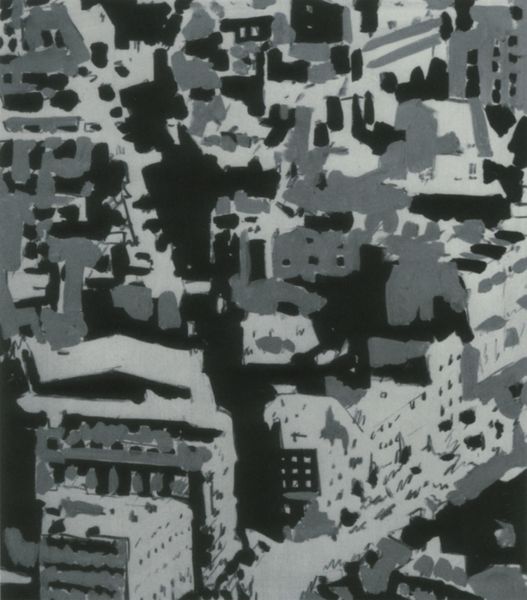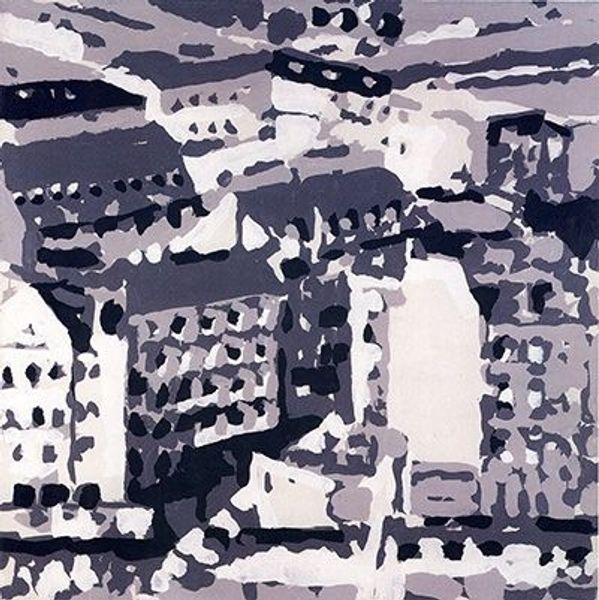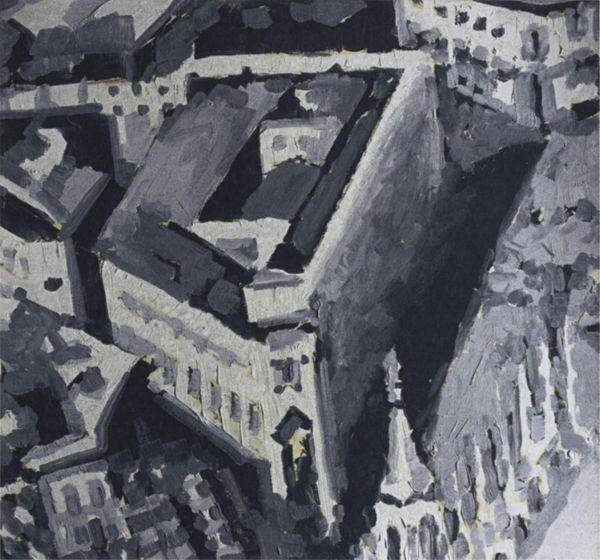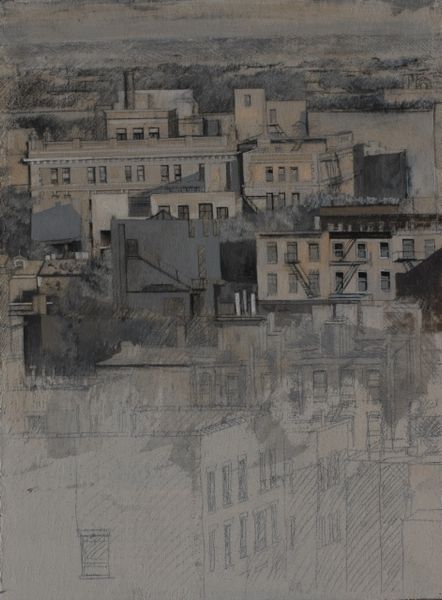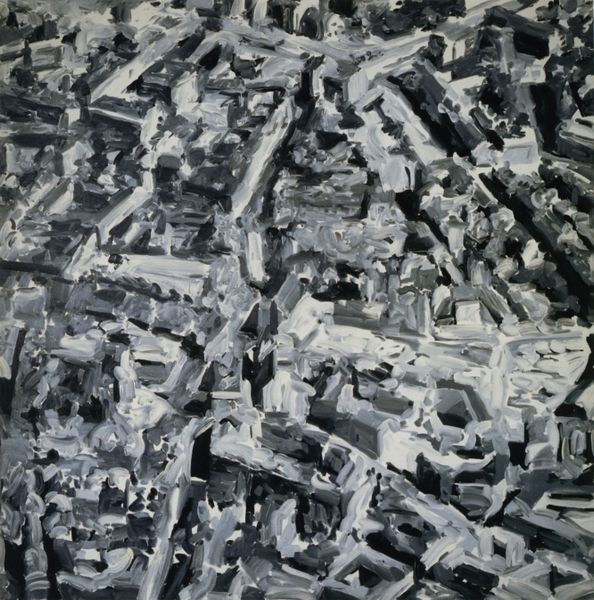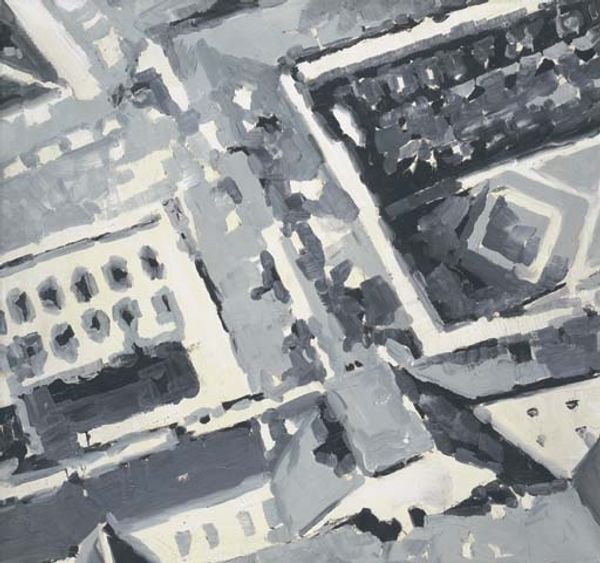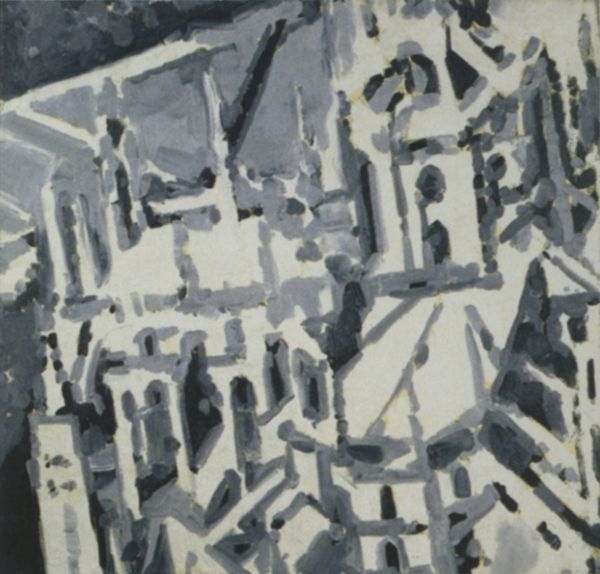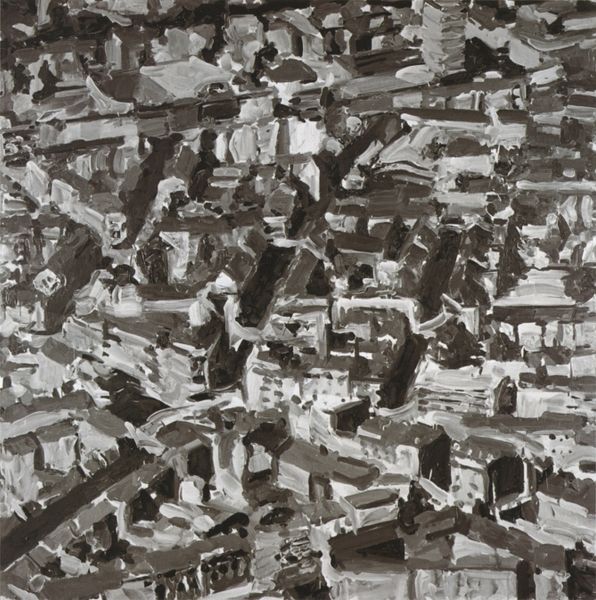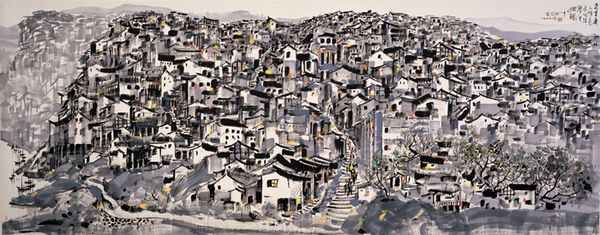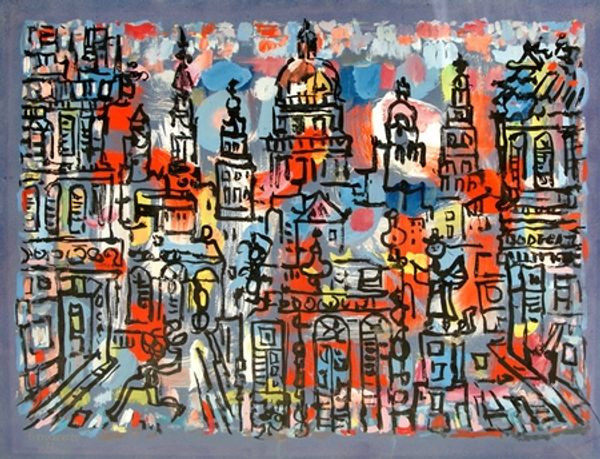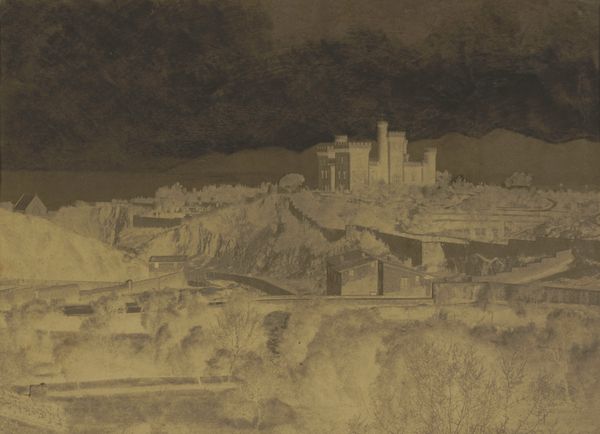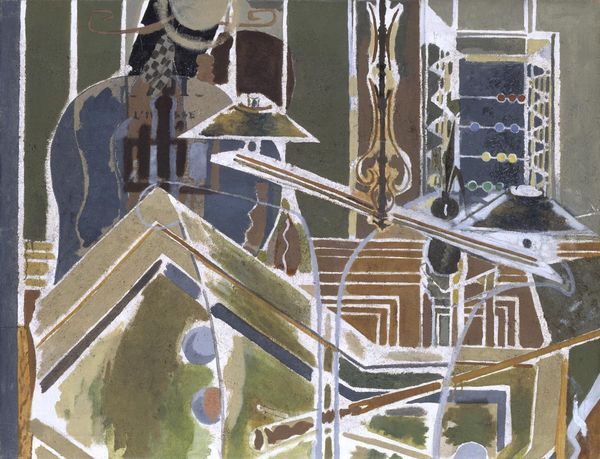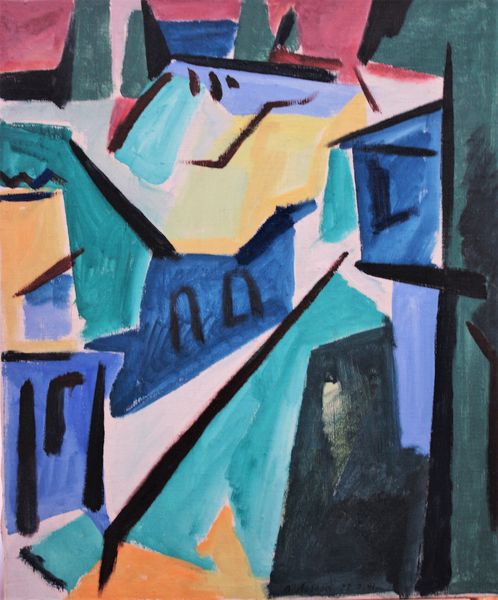
painting
#
abstract expressionism
#
urban landscape
#
urban
#
painting
#
pattern
#
urban cityscape
#
geometric
#
capitalist-realism
#
pop-art
#
cityscape
#
urban photography
#
modernism
Copyright: 2019 Gerhard Richter - All Rights Reserved
Curator: Immediately striking, isn’t it? This painting, "Townscape" by Gerhard Richter, executed in 1969, offers a rather unusual take on the urban landscape. Editor: Yes, it’s quite interesting. I’m immediately drawn to the palette, the severe use of grayscale... it lends this sense of distance, almost like a half-remembered dream of a city. What's compelling about its stark rendering? Curator: That detached, almost impersonal feel is key. Richter was working in the aftermath of the Second World War. This period significantly shaped artistic perceptions of the urban environment. What visual memories did these fragmented cityscapes create and retain? Editor: So the muted tones and simplified forms serve a dual purpose: aesthetic and historical commentary. How does it speak to Richter's broader artistic project within the context of postwar Germany? It clearly isn't simple representation. Curator: Precisely. It's more a commentary on how photographic imagery mediates our understanding of the world around us. These aren't idealized monuments; they are representations of reality mediated through a lens, printed in newspapers. Think about the architectural motifs - flattened facades, repetitive geometries. The painting strips away detail to leave only the skeletal essence of urban life. He reveals something deeper: the psychological impact of modernization. Editor: The almost geometric nature feels connected to Modernism but there is also a Pop Art sensibility, with what appears to be abstracted photographic imagery. Was he attempting to reconcile these apparently contradictory impulses? Curator: Absolutely. In the context of pop-art the cultural symbol of urban landscape creates an unsettling blend. This fusion reflects the uneasy transition of post-war societies grappling with historical traumas while trying to participate in modernity. What unspoken connections surface here? Editor: Looking at it again, I am also drawn to how "Townscape" invites reflections on societal memory and identity. I guess that cities are repositories for the experiences of populations that constructed them over time, right? Curator: In a world shaped by conflict and reconstruction, art had a critical role to remember collective memory and cultural continuation. The urban landscape could serve as a site where the past is constantly negotiated and where modern culture might rediscover some depth of understanding. Editor: So what at first appears like a detached cityscape contains a web of social, psychological and cultural implications. Thank you, the piece resonates on a much more reflective, human level now. Curator: Exactly! Hopefully this encourages us all to examine the symbols of modernity critically, acknowledging their emotional and historical reverberations.
Comments
No comments
Be the first to comment and join the conversation on the ultimate creative platform.
